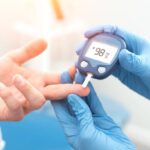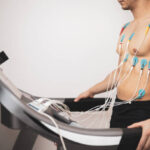Your heart is the powerhouse of your body, tirelessly pumping blood and oxygen to keep you alive and kicking. But sometimes, things can go awry. Heart diseases encompass a range of conditions that affect the heart’s structure and function. These can include coronary artery disease, heart attacks, heart failure, arrhythmias, and more.
While some risk factors are common to both men and women, certain factors may disproportionately affect women or have different implications. Let’s explore these risk factors:
1. High Blood Pressure (Hypertension) – Elevated blood pressure puts strain on the heart and blood vessels, increasing the risk of heart disease. Women, especially those who are postmenopausal, may experience an increase in blood pressure due to hormonal changes.
2. High Cholesterol – Elevated levels of LDL cholesterol (“bad” cholesterol) and triglycerides can lead to the buildup of plaque in the arteries, restricting blood flow to the heart. Women with low levels of HDL cholesterol (“good” cholesterol) may also be at higher risk.
3. Diabetes – Women with diabetes are at a greater risk of developing heart diseases compared to men with diabetes. Elevated blood sugar levels can damage blood vessels and increase the likelihood of heart complications.
4. Smoking – Tobacco use is a significant risk factor for heart disease in women. Smoking not only damages the cardiovascular system but also reduces estrogen levels, which can accelerate the development of heart diseases, particularly in younger women.
5. Obesity and Physical Inactivity – Being overweight or obese increases the strain on the heart and raises the risk of developing conditions such as high blood pressure, diabetes, and high cholesterol. Physical inactivity further compounds these risks by weakening the heart and promoting unhealthy metabolic changes.
6. Family History – A family history of heart disease, especially if a close relative experienced heart problems at a young age (before age 65 for women), can elevate a woman’s risk. Genetic predispositions to conditions like high blood pressure or high cholesterol may also play a role.
7. Mental Health Factors – Chronic stress, depression, and anxiety can take a toll on heart health, particularly in women. Women are more likely to report experiencing stress-related symptoms, and long-term stress can contribute to high blood pressure and other risk factors for heart diseases.
8. Pregnancy Complications – Certain pregnancy-related complications, such as gestational diabetes, preeclampsia, and gestational hypertension, can increase a woman’s risk of developing heart diseases later in life. These conditions may indicate underlying vascular problems that persist beyond pregnancy.
9. Autoimmune Diseases – Conditions like rheumatoid arthritis, lupus, and psoriasis are more prevalent in women and have been associated with an increased risk of cardiovascular diseases. Chronic inflammation, characteristic of autoimmune diseases, can damage blood vessels and contribute to the development of heart diseases.
10. Menopause – The hormonal changes that accompany menopause can affect heart health in women. A decline in estrogen levels may lead to unfavourable changes in cholesterol levels and blood vessel function, increasing the risk of heart disease.
Women often experience different symptoms of heart disease compared to men. While chest pain is a common symptom for both genders, women are more likely to experience subtler signs such as:
1. Chest Discomfort – While chest pain is a common symptom for both men and women, women may experience discomfort rather than intense pain. This discomfort can feel like pressure, tightness, squeezing, or fullness in the chest that may come and go.
2. Shortness of Breath – Feeling breathless or experiencing difficulty breathing, especially during activity or at rest, can be a warning sign of heart problems. Women may also feel breathless with minimal exertion.
3. Nausea or Vomiting – Unexplained nausea or vomiting, particularly when not associated with digestive issues or illness, can be a symptom of a heart attack or other heart-related problems.
4. Jaw, Neck, or Back Pain – Women may experience pain or discomfort in the jaw, neck, or back that spreads from the chest. This pain can be subtle and may be mistaken for muscle strain or tension.
5. Fatigue – Extreme tiredness, weakness, or a feeling of exhaustion that isn’t relieved by rest could be a sign of heart trouble. Women may feel more fatigued than usual, even with routine activities.
6. Dizziness or Lightheadedness– Feeling dizzy, lightheaded, or fainting can indicate a drop in blood flow to the brain, which may be related to heart issues. Women may experience these symptoms more frequently than men.
7. Cold Sweats – Profuse sweating, especially when it’s not triggered by heat or physical activity, can be a symptom of a heart attack. Women may experience cold sweats or clammy skin during a cardiac event.
8. Arm Pain – Pain or discomfort in one or both arms, often radiating from the chest, is another possible symptom of heart problems. Women may feel pain in the left arm, right arm, or both.
9. Unexplained Anxiety – Feeling anxious or having a sense of impending doom without a clear cause could be a symptom of a heart attack, particularly in women. This anxiety may occur alongside other symptoms or on its own.
10. Fluttering or Racing Heartbeat – Sensations of a rapid, irregular, or pounding heartbeat, known as palpitations, may occur during a heart-related event. Women may notice these sensations more often during rest or minimal exertion.
Knowledge is power when it comes to protecting your heart. As a woman, you can take control of your heart health and reduce your risk of heart disease. Start by adopting heart-healthy habits such as eating a balanced diet, exercising regularly, maintaining a healthy weight, managing stress, getting enough sleep, and avoiding smoking and excessive alcohol consumption. Additionally, attend regular check-ups with your healthcare provider and be proactive about discussing your heart health concerns.
It’s time to shatter the silence surrounding women’s heart health. By raising awareness about the prevalence of heart diseases in women and advocating for gender-specific research and healthcare initiatives, we can ensure that women receive the attention and care they deserve. Share your knowledge with your friends, family, and community, and encourage them to prioritise their heart health.
Heart diseases are not just a man’s problem – they affect women too, and often in different ways. By understanding women’s unique risks and symptoms, we can empower ourselves and others to take proactive steps towards a healthier heart. Remember, your heart matters, so listen to it, nurture it, and protect it with all your might.











